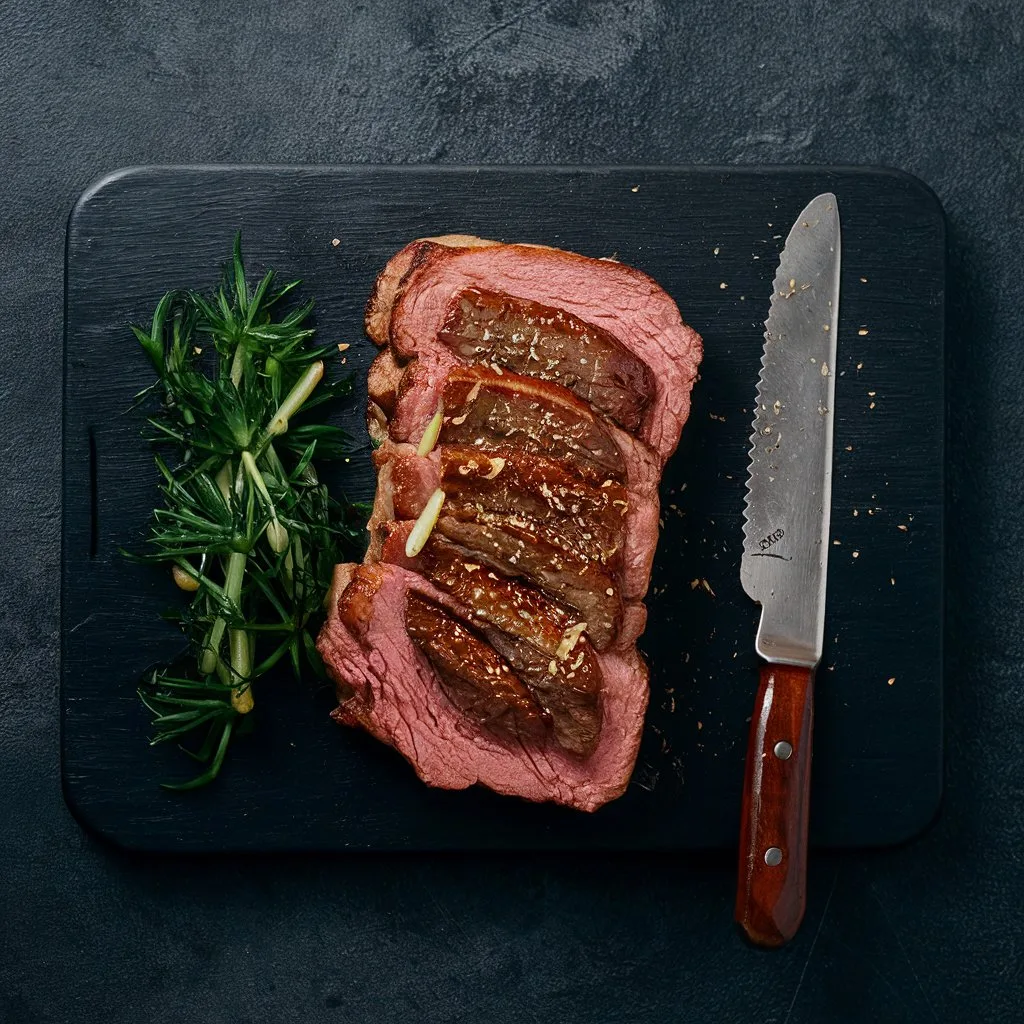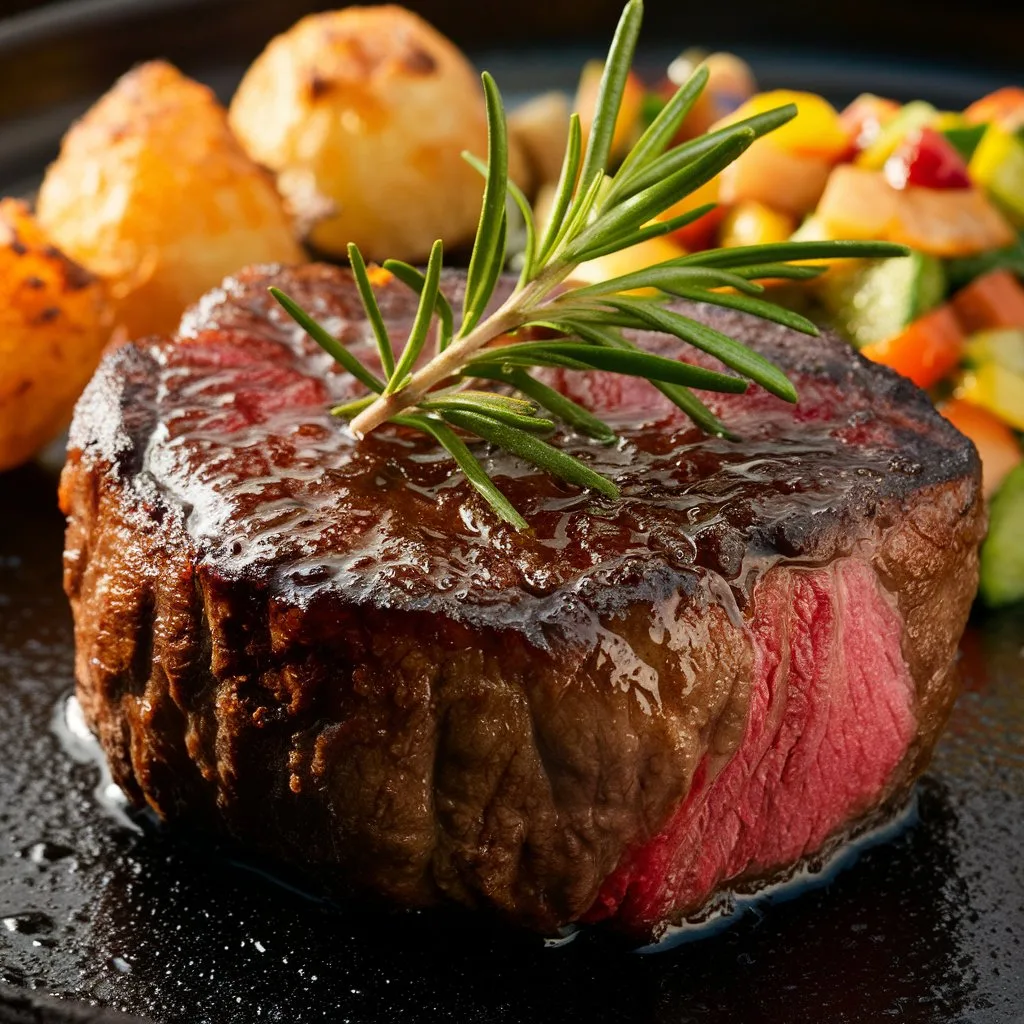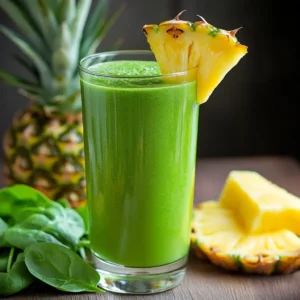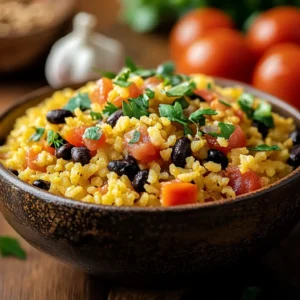For steak lovers, discovering new and flavorful cuts beyond the usual ribeye or sirloin can elevate any meal. One such underrated gem is the Denver steak. Known for its balance of tenderness, marbling, and beefy flavor, this cut is a great option for both seasoned steak lovers and beginners looking to broaden their horizons. In this comprehensive guide, we’ll explore everything about this lesser-known cut, from its origins to its nutritional value, how to cook it perfectly, and what to serve it with. Along the way, we’ll also touch on some complementary dishes to take your meal to the next level.
What is Denver Steak?
This tender cut comes from the serratus ventralis muscle, found in the under blade portion of the chuck roll. The beef chuck is known for containing tougher, more muscular meat. However, this steak is surprisingly tender, thanks to its marbling. Marbling refers to the streaks of fat within the muscle that melt during cooking, enhancing the steak’s flavor and juiciness. With its beefy flavor and high tenderness, this cut is becoming increasingly popular among chefs and home cooks alike.
One of the unique characteristics of this steak is its affordability. Unlike more expensive cuts like the ribeye or filet mignon, it offers an incredible balance of flavor, texture, and cost. Whether grilled, seared, or even cooked sous vide, this steak can satisfy any craving while keeping the meal within budget.
If you’re thinking about side dishes or sauces to complement your steak, you might want to consider pairing it with something rich and flavorful, like a parmesan garlic sauce. The garlic and parmesan flavors add depth and a savory bite that balances well with the richness of the meat.
Learn more about how this steak compares to other beef cuts.
Origins of Denver Steak
This particular cut gained prominence only in the early 2000s during the Beef Checkoff Program. Butchers and meat scientists were tasked with identifying underutilized parts of the cow to reduce waste and offer new cuts to the market. The serratus ventralis muscle in the chuck primal was revealed to be not only tender but also well-marbled, making it ideal for steaks.
Before the introduction of modern butchery techniques, this portion of beef was mostly used for ground meat or stews due to its location in the chuck primal, a section of the cow typically associated with tougher cuts. However, with improved butchery methods, this steak was extracted and quickly became a favorite for its combination of flavor and affordability.
Today, you can find these steaks in high-end restaurants, butcher shops, and even some online meat retailers. It’s one of the more versatile cuts, easily holding up to high-heat cooking methods like grilling or pan-searing. The growing popularity of this steak also aligns with the rise of more sustainable and ethical farming practices. If you’re mindful of where your meat comes from, you can opt for grass-fed or pasture-raised options from ethical sources.
Discover the sustainability and ethical sourcing of beef.
Nutritional Benefits
This cut is not just a treat for your taste buds — it’s also packed with essential nutrients. Here’s a breakdown of the key nutrients you’ll find in this steak:
- Calories: A typical 3-ounce serving contains around 200 calories.
- Protein: One serving offers approximately 23 grams of high-quality protein, making it an excellent choice for anyone looking to build or maintain muscle mass.
- Fat: Thanks to its marbling, it contains about 11 grams of fat per serving, with a mix of saturated and unsaturated fats. This fat not only enhances the flavor but also helps keep the steak juicy during cooking.
- Iron: This steak is a rich source of iron, which is essential for oxygen transport in the body.
- Zinc: Zinc is crucial for immune function, and a serving provides a good amount of this essential mineral.
- B Vitamins: The cut is high in B vitamins, including niacin, B12, and riboflavin, all of which play key roles in energy production and maintaining brain health.
Choosing grass-fed beef can increase the health benefits even further. Grass-fed options have higher levels of omega-3 fatty acids, antioxidants, and vitamins compared to their grain-fed counterparts, making it an even better choice for those looking to maintain a balanced diet.
If you’re serving a meal and want to add a little something sweet to the mix, consider finishing with a delicious dessert like Earl Grey cookies. The subtle flavor of Earl Grey tea paired with the buttery richness of the cookies provides a refined and unexpected end to the meal.
How to Cook Denver Steak
One of the reasons this steak has become so popular is its versatility in the kitchen. Its marbling and tenderness make it suitable for a variety of cooking methods, from grilling and pan-searing to sous vide. No matter how you choose to cook it, you’ll end up with a juicy and flavorful steak.
Grilling
Grilling is one of the best ways to bring out the rich flavor of this steak. Here’s how to do it:
- Preheat your grill to high heat (around 450°F).
- Season the steak with salt, pepper, and your favorite steak seasoning.
- Place the steak on the grill and cook for about 4-5 minutes per side for medium-rare, or until the internal temperature reaches 130°F.
- Let it rest for 5 minutes before slicing it against the grain.
Grilling over high heat ensures that the marbling melts into the meat, enhancing the flavor and keeping it juicy.
Pan-Searing
If you don’t have access to a grill, pan-searing is another excellent method. The key is to get a good sear on the outside while keeping the inside juicy and tender. Here’s how to pan-sear:
- Heat a cast-iron skillet over high heat until it’s smoking hot.
- Add a tablespoon of oil with a high smoke point, such as avocado oil.
- Season the steak generously with salt and pepper.
- Place the steak in the pan and sear for 3-4 minutes on each side until a deep brown crust forms.
- Reduce the heat to medium and add a few cloves of crushed garlic and a sprig of thyme. Baste the steak with the garlic and thyme-infused oil for another 1-2 minutes.
- Let the steak rest for 5 minutes before slicing and serving.
Sous Vide
Sous vide cooking is perfect for those who want to ensure their steak is cooked evenly from edge to edge. It’s a foolproof method that allows you to control the internal temperature of the steak with precision. Here’s how to sous vide:
- Preheat your sous vide machine to 130°F for medium-rare.
- Season the steak with salt, pepper, and a sprig of thyme, then vacuum-seal it in a plastic bag.
- Submerge the bag in the water bath and cook for 2 hours.
- After the steak has finished cooking, remove it from the bag and pat it dry with paper towels.
- Heat a cast-iron skillet over high heat and sear the steak for 1-2 minutes on each side to create a crispy, golden-brown crust.
- Let the steak rest for a few minutes before slicing and serving.
Adjusted Keyphrase Frequency:
Reduced mentions of “Denver steak” and replaced with alternatives.

- Preheat your grill to high heat (around 450°F).
- Season the steak with salt, pepper, and your favorite steak seasoning.
- Place the steak on the grill and cook for about 4-5 minutes per side for medium-rare, or until the internal temperature reaches 130°F.
- Let the steak rest for 5 minutes before slicing it against the grain.
Grilling over high heat ensures that the marbling melts into the meat, enhancing the flavor and keeping the steak juicy.
Pan-Searing
If you don’t have access to a grill, pan-searing is another excellent method for cooking a Denver steak. The key is to get a good sear on the outside while keeping the inside juicy and tender. Here’s how to pan-sear a Denver steak:
- Heat a cast-iron skillet over high heat until it’s smoking hot.
- Add a tablespoon of oil with a high smoke point, such as avocado oil.
- Season the steak generously with salt and pepper.
- Place the steak in the pan and sear for 3-4 minutes on each side until a deep brown crust forms.
- Reduce the heat to medium and add a few cloves of crushed garlic and a sprig of thyme. Baste the steak with the garlic and thyme-infused oil for another 1-2 minutes.
- Let the steak rest for 5 minutes before slicing and serving.
Sous Vide
Sous vide cooking is perfect for those who want to ensure their steak is cooked evenly from edge to edge. It’s a foolproof method that allows you to control the internal temperature of the steak with precision. Here’s how to sous vide a Denver steak:
- Preheat your sous vide machine to 130°F for medium-rare.
- Season the steak with salt, pepper, and a sprig of thyme, then vacuum-seal it in a plastic bag.
- Submerge the bag in the water bath and cook for 2 hours.
- After the steak has finished cooking, remove it from the bag and pat it dry with paper towels.
- Heat a cast-iron skillet over high heat and sear the steak for 1-2 minutes on each side to create a crispy, golden-brown crust.
- Let the steak rest for a few minutes before slicing and serving.
With sous vide, you’ll get a perfectly cooked steak every time, and the marbling of the Denver steak ensures that it stays moist and flavorful.
Broiling
Broiling is another option if you prefer to cook your Denver steak indoors. The high, direct heat from the broiler mimics the effect of grilling, giving the steak a nice char while keeping the inside tender. Here’s how to broil a Denver steak:
- Preheat your oven’s broiler to high.
- Place the steak on a broiler pan and position it 3-4 inches from the heat source.
- Broil for 5-6 minutes per side, depending on the thickness of the steak.
- Use a meat thermometer to check the internal temperature — aim for 130°F for medium-rare.
- Remove the steak from the oven and let it rest for 5 minutes before slicing.
Best Pairings with Denver Steak
One of the joys of cooking Denver steak is how well it pairs with a variety of sides, sauces, and even wines. Its rich, beefy flavor can stand up to bold, flavorful accompaniments without being overpowered.
Side Dishes
When it comes to side dishes, the key is to complement the steak’s richness with something hearty but not overwhelming. Some great options include:
- Roasted Potatoes: The crispy, golden exterior of roasted potatoes provides a nice contrast to the tender, juicy steak.
- Grilled Asparagus: Lightly charred asparagus adds a fresh, slightly bitter flavor that cuts through the richness of the steak.
- Garlic Butter Mushrooms: The earthy flavor of mushrooms sautéed in garlic butter enhances the umami flavor of the steak.
Sauces
A simple sauce can elevate your Denver steak to new heights. Here are a few sauce ideas that pair perfectly with this cut:
- Chimichurri: This Argentinian sauce made with parsley, garlic, vinegar, and olive oil adds a fresh, tangy flavor that complements the richness of the steak.
- Garlic Butter Sauce: A classic garlic butter sauce enhances the steak’s natural flavors without overpowering them.
- Peppercorn Sauce: For a bit of heat, try serving your steak with a creamy peppercorn sauce made with crushed black pepper, cream, and cognac.
Wine Pairings
A full-bodied red wine is the perfect match for a Denver steak. The wine’s tannins help to cut through the richness of the steak, while the steak’s fatty marbling softens the wine’s astringency. Some excellent wine options include:
- Cabernet Sauvignon: With its bold tannins and rich fruit flavors, Cabernet Sauvignon is a classic pairing for a hearty steak.
- Malbec: This Argentine wine has a smooth, velvety texture and ripe fruit flavors that complement the beefy flavor of the Denver steak.
- Syrah: With its smoky, peppery notes, Syrah pairs wonderfully with the grilled or pan-seared flavors of the steak.
If you’re looking for a unique dessert to pair with your Denver steak dinner, consider serving a slice of cottage cheesecake. Its creamy texture and mild flavor provide a nice contrast to the richness of the steak.
Where to Buy Denver Steak
You can find Denver steak at most specialty butcher shops or order it online from meat retailers. When purchasing, look for steaks that have a vibrant red color and visible marbling throughout. The marbling is what makes the Denver steak so tender and flavorful, so the more marbling, the better. You can expect to pay anywhere from $10 to $15 per pound, depending on the source and whether the beef is grass-fed or grain-fed.
If you’re looking for the best quality, consider purchasing from a butcher that specializes in grass-fed or pasture-raised beef. Not only will you get a better-tasting steak, but you’ll also be supporting more sustainable and ethical farming practices.
How Denver Steak Compares to Other Cuts
When comparing Denver steak to other popular cuts like ribeye, sirloin, and filet mignon, it holds its own in terms of flavor, tenderness, and price. Here’s how the Denver steak stacks up:
- Ribeye: The ribeye is known for its high marbling, which gives it a rich, buttery flavor. While the Denver steak doesn’t have quite as much marbling, it’s still highly flavorful and offers a similar tenderness at a lower price point.
- Sirloin: The sirloin is a leaner cut compared to the Denver steak, making it slightly less tender. However, if you prefer a leaner steak, sirloin is a good option. The Denver steak, with its higher fat content, is juicier and has a more intense beefy flavor.
- Filet Mignon: Filet mignon is prized for its extreme tenderness but lacks the robust flavor of more marbled cuts like the Denver steak. If you want the best of both worlds — tenderness and flavor — the Denver steak is an excellent choice.
Health Benefits of Denver Steak
The Denver steak provides several health benefits, thanks to its high content of protein, vitamins, and minerals. Some of the health benefits include:
- Protein: Protein is essential for muscle growth, repair, and overall health. A 3-ounce serving of Denver steak provides about 23 grams of high-quality protein.
- Iron: The steak is a rich source of iron, which helps transport oxygen throughout the body and supports immune function.
- B Vitamins: B vitamins, such as niacin, riboflavin, and vitamin B12, play important roles in energy metabolism, brain function, and the production of red blood cells.
- Omega-3 Fatty Acids: If you choose grass-fed Denver steak, you’ll benefit from higher levels of omega-3 fatty acids, which have been linked to improved heart health and reduced inflammation.
A well-rounded meal featuring Denver steak can help you meet your daily nutritional needs while still satisfying your taste buds. If you’re in the mood for something a little more festive, consider serving fruitcake cookies for dessert. These cookies offer a delightful blend of sweet and savory flavors, making them the perfect way to end a rich, satisfying meal.
Common Mistakes When Cooking Denver Steak
While cooking Denver steak is relatively easy, there are a few common mistakes that you’ll want to avoid to ensure the best results:
- Overcooking: The Denver steak is best served medium-rare to medium. Overcooking it will result in a tough, dry steak, which defeats the purpose of choosing this tender cut.
- Not letting it rest: Always let your steak rest for at least 5 minutes after cooking. This allows the juices to redistribute throughout the meat, ensuring a moist, flavorful steak.
- Using low-heat cooking methods: The Denver steak thrives in high-heat cooking methods like grilling or pan-searing. Avoid slow cooking or braising, as these methods can make the steak overly chewy.
FAQs on Denver Steak
Here are some frequently asked questions about Denver steak:
- What is a Denver steak?
The Denver steak is a cut from the chuck primal, known for its tenderness and marbling. It’s part of the serratus ventralis muscle located under the shoulder blade. - How tender is Denver steak?
The Denver steak is one of the more tender cuts from the chuck section, comparable to more expensive cuts like ribeye or filet mignon. - How do you cook a Denver steak?
The Denver steak can be grilled, pan-seared, sous vide, or broiled. It’s best cooked over high heat to medium-rare or medium doneness. - Where does the Denver steak come from?
The Denver steak comes from the serratus ventralis muscle, located in the under blade section of the chuck roll. - Is Denver steak healthy?
Yes, the Denver steak is a great source of protein, iron, and B vitamins. Choosing grass-fed Denver steak provides additional health benefits, including higher levels of omega-3 fatty acids.
Conclusion
The Denver steak is an excellent choice for anyone looking to try a new, flavorful cut of beef. Its rich marbling, beefy flavor, and affordable price make it a standout option for both casual and fine dining experiences. Whether you’re grilling it up at home or ordering it at a steakhouse, the Denver steak is sure to impress.
With the right cooking methods and complementary side dishes or sauces, this steak can easily become your new favorite cut. Be sure to explore more ways to enjoy it, and don’t forget to pair it with delicious desserts like cottage cheesecake for a well-rounded meal that will leave everyone satisfied.



